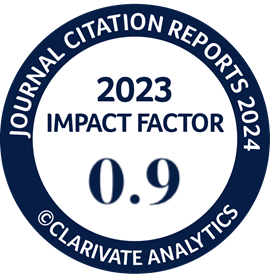A Novel Approach for Fabricating High-Performance Aluminum Matrix Composites: Friction Stir Processing with Micro-TiO2 Particle Reinforcement by Grey-Taguchi Multi-Response Optimization
DOI:
https://doi.org/10.4186/ej.2025.29.1.27Keywords:
aluminum matrix composites, FSP, Grey-Taguchi multi-responseAbstract
The development of high-performance Aluminum Matrix Composites (AMCs) is critical due to the increasing demand for materials with superior mechanical properties, particularly in aerospace and automotive industries. This research addresses the need to enhance the hardness and impact energy of AA6061-T6 aluminum alloy by reinforcing it with micro-TiO2 particles through Friction Stir Processing (FSP). The primary objective is to optimize the FSP parameters to improve these mechanical properties. A Grey-Taguchi method was employed for multi-response optimization, focusing on tool rotational speed, traverse speed, and TiO2 particle volume. The methodology utilized Taguchi Orthogonal Arrays (OA) to minimize experimental runs while still capturing comprehensive data. Grey Relational Analysis (GRA) was applied to handle multiple correlated responses, converting them into a unified metric, the Grey Relational Grade (GRG). The results identified the optimal FSP parameters as a tool speed of 1100 rpm, traverse speed of 20 mm/min, and TiO2 particle volume of 450 mm³, which significantly enhanced the mechanical properties. Comparative analysis revealed that the optimal parameters improved both hardness and impact energy by 15.80 J, with a GRG value of 0.905, indicating strong correlation between predicted and experimental outcomes. Confirmation experiments validated these results, with a 0.099 increase in GRG, suggesting that the combination of process parameters was highly effective. The findings highlight the significant influence of TiO2 particle volume on the mechanical performance of the composite. These results provide critical insights to produce advanced AMCs, offering pathways to achieving high-performance materials for industrial applications.
Downloads
Downloads

Authors who publish with Engineering Journal agree to transfer all copyright rights in and to the above work to the Engineering Journal (EJ)'s Editorial Board so that EJ's Editorial Board shall have the right to publish the work for nonprofit use in any media or form. In return, authors retain: (1) all proprietary rights other than copyright; (2) re-use of all or part of the above paper in their other work; (3) right to reproduce or authorize others to reproduce the above paper for authors' personal use or for company use if the source and EJ's copyright notice is indicated, and if the reproduction is not made for the purpose of sale.








